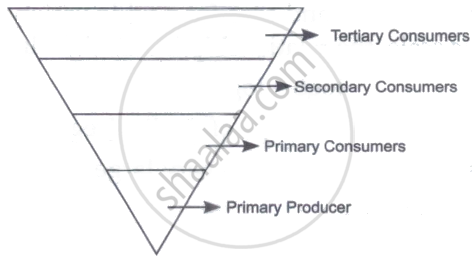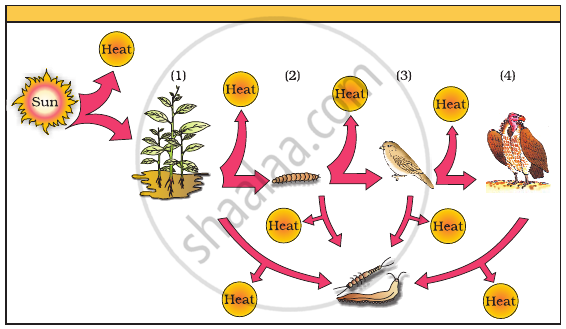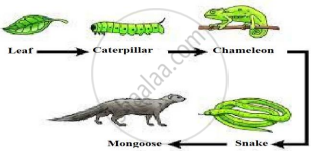Advertisements
Advertisements
प्रश्न
Consider the amount of organic matter at the different trophic levels in an ecosystem given below:
| Trophic Level | Amount of organic matter (in Kg) |
| Tertiary consumers | 250 |
| Primary consumers | 150 |
| Primary producers | 100 |
| Secondary Consumers | 200 |
On the basis of the data provided above, construct an ecological pyramid. Comment upon its nature giving at least one example of the type of organism occupying each of the above mentioned trophic levels.
उत्तर
The given data has resembled the marine ecosystem. Almost all aquatic environments will have inverted biomass pyramids. This is because the primary producers are always located at the base of the pyramid and in an aquatic environment, plankton organisms occupy this space. The lower level organisms bloom or reproduce at a faster rate than the trophic level above them. Therefore they can still sustain that level in terms of food even though their biomass at a given time is smaller. This chain effect is vital to these organisms' survival because low mass does not mean an imbalance in the system. For example: on average killer whale consumes about 100-300 pounds of food a day but take between 6-13 years to reach maturity. On the other end of this spectrum, given proper conditions, phytoplanktons can double their number in only one day and generally grow up to 100 times faster than plants on land. Therefore, phytoplankton is the primary producer of most marine biomass pyramids.
- (TOP) Tertiary Consumers (Secondary Carnivores or Apex Predators): orcas
- Secondary Consumers (Primary Carnivores or Predators): dolphins
- Primary Consumers (Herbivores): copepods
- (BOTTOM) Primary producers: phytoplankton

APPEARS IN
संबंधित प्रश्न
Define Diffusion
State the importance of green plants in an ecosystem.
Describe the energy flow in an ecosystem.
Energy enters in a food chain through
What do you understand by the term hydroelectric power?
A wolf has just eaten a lamb. When tiger saw the wolf, it attacked on the wolf. The tiger in ecological terms is
Fill in the trophic levels (1, 2, 3 and 4) in the boxes provided in the figure.
What will happen to an ecosystem if all organisms of herbivore level are eliminated?
Which of the following food chains is the major conduit for energy flow in terrestrial and aquatic ecosystems respectively?
Study the food chain given below and answer the question that follows:

Is it possible to have 2 more trophic levels in this food chain just before the fourth trophic level? Justify your answer.
